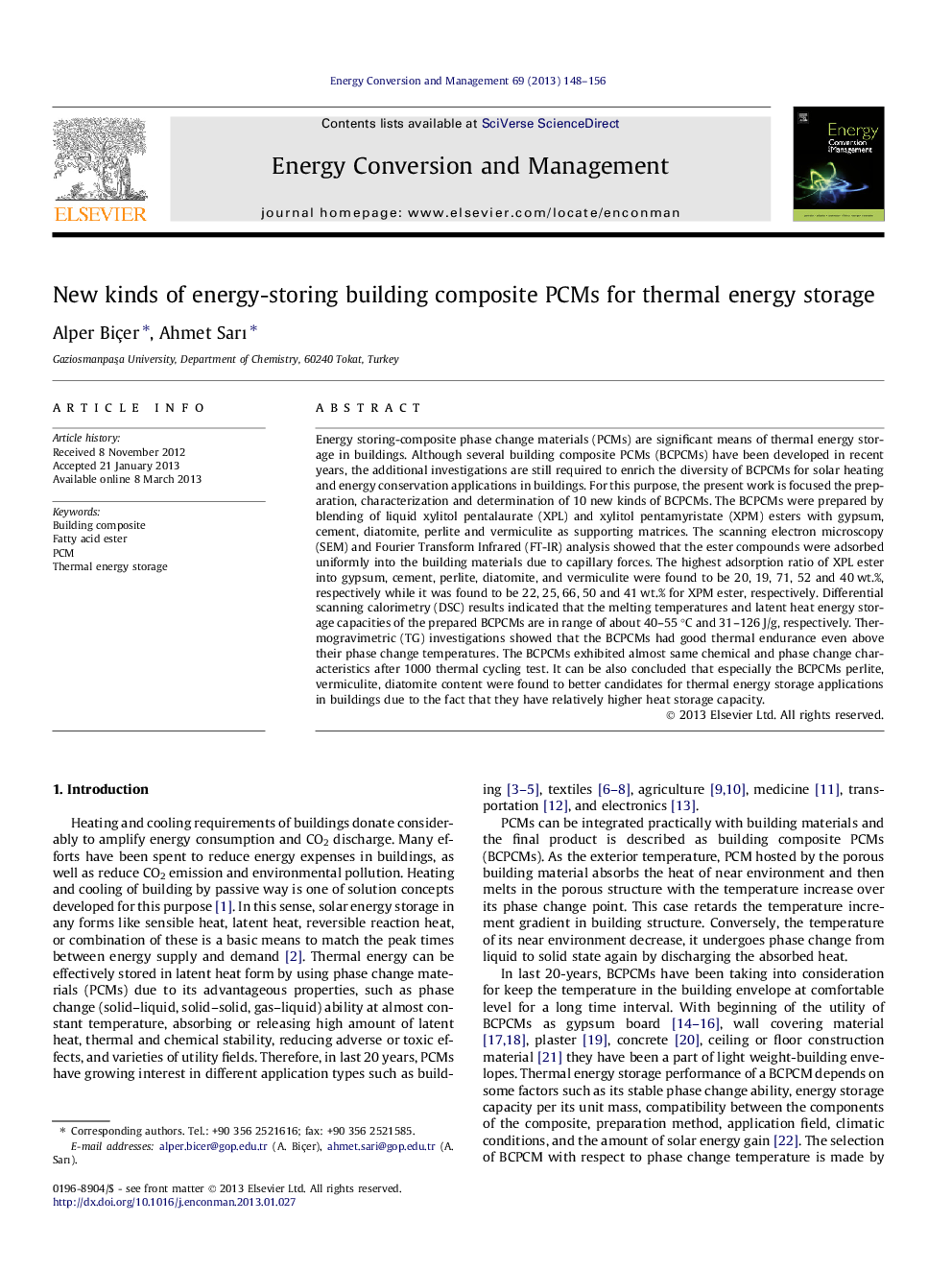| Article ID | Journal | Published Year | Pages | File Type |
|---|---|---|---|---|
| 760974 | Energy Conversion and Management | 2013 | 9 Pages |
Energy storing-composite phase change materials (PCMs) are significant means of thermal energy storage in buildings. Although several building composite PCMs (BCPCMs) have been developed in recent years, the additional investigations are still required to enrich the diversity of BCPCMs for solar heating and energy conservation applications in buildings. For this purpose, the present work is focused the preparation, characterization and determination of 10 new kinds of BCPCMs. The BCPCMs were prepared by blending of liquid xylitol pentalaurate (XPL) and xylitol pentamyristate (XPM) esters with gypsum, cement, diatomite, perlite and vermiculite as supporting matrices. The scanning electron microscopy (SEM) and Fourier Transform Infrared (FT-IR) analysis showed that the ester compounds were adsorbed uniformly into the building materials due to capillary forces. The highest adsorption ratio of XPL ester into gypsum, cement, perlite, diatomite, and vermiculite were found to be 20, 19, 71, 52 and 40 wt.%, respectively while it was found to be 22, 25, 66, 50 and 41 wt.% for XPM ester, respectively. Differential scanning calorimetry (DSC) results indicated that the melting temperatures and latent heat energy storage capacities of the prepared BCPCMs are in range of about 40–55 °C and 31–126 J/g, respectively. Thermogravimetric (TG) investigations showed that the BCPCMs had good thermal endurance even above their phase change temperatures. The BCPCMs exhibited almost same chemical and phase change characteristics after 1000 thermal cycling test. It can be also concluded that especially the BCPCMs perlite, vermiculite, diatomite content were found to better candidates for thermal energy storage applications in buildings due to the fact that they have relatively higher heat storage capacity.
Graphical abstractIn this work, 10 new kinds of BCPCMs were prepared by blending of liquid xylitol pentalaurate (XPL) and xylitol pentamyristate (XPM) esters into gypsum, cement, diatomite, perlite and vermiculite. DSC results showed that the melting temperatures and energy storage capacities of the prepared BCPCMs are in range of about 40–55 °C and 31–126 J/g, respectively. TG investigations and thermal cycling test showed that the BCPCMs had good thermal endurance and thermal reliability. It can be also concluded that among the prepared 10 kinds materials, especially the BCPCMs including perlite, vermiculite, diatomite were found to better candidates for thermal energy storage applications in buildings due to the fact that they have relatively high heat storage ability.Figure optionsDownload full-size imageDownload as PowerPoint slideHighlights► New kinds BCPCMs were prepared by blending of liquid XPL and XPM esters with some building materials. ► The BCPCMs had suitable melting temperatures and energy storage capacities. ► Especially, the BCPCMs including perlite, vermiculite, diatomite were found to better candidates for thermal energy storage.
